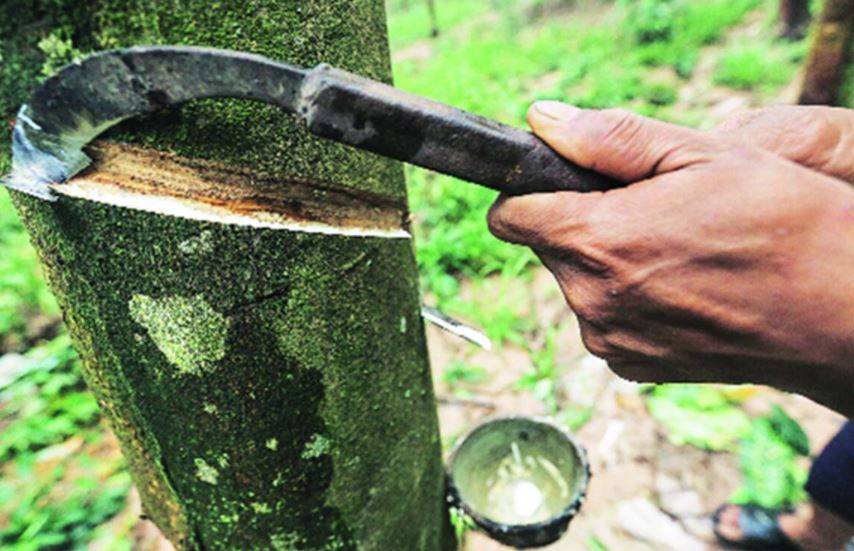
The Rubber Board of India has started to promote high yielding Indian clones (RRII 429) of rubber to boost rubber productivity in the northeast region.
Advantage of RRII 429
The RRIM 600 clone is frequently farmed in the northeast, and its production is significantly lower than that of traditional locations.“Based on decades of evaluation across several locations in Tripura, Assam, north-west Bengal and Meghalaya, the RRII has developed high yielding clones adapted to the NE region,” said Jessy MD, Director in charge of Rubber Research Institute of India.
When compared to the presently farmed RRIM 600, the indigenously created clone RRII 429 performs better. The RRII 429 has a faster growth rate and can be tapped for rubber approximately a year before the RRIM 600. In addition, the yield is 20-30 per cent greater.
The Rubber Board is pushing RRII 429 in the North-East because of the benefits of early tree opening for tapping and better yield. Planting materials for the clone are being produced in the Rubber Board's nurseries in the North-East.
Reason for Increase in Rubber cultivation in North-Eastern India
The northeast region is the second most rubber producing region in India, the state of Tripura specifically is ranked number two after Kerala for the percentage of rubber produced each year.
About 18 per cent of the total 7.15 lakh tonnes of rubber produced by India comes front the Northeast. The centre is currently promoting natural rubber cultivation in Assam, Tripura, Meghalaya, Manipur, Mizoram Arunachal Pradesh, Nagaland and West Bengal to further increase the domestic production of rubber. In 2020 according to Statista.com India consumed 1,134 thousand metric tonnes of rubber, making India the second-largest consumer of Rubber in the world after China.
However, due to heavy rains in southern Indian Rubber plantations couldn’t actually be tapped and hence caused a drop in the production of rubber in India that led India to actually import 46000 tonnes of rubber in September and 40500 tonnes of rubber in August. Hence this step taken by the Rubber Board of India to start the cultivation of rubber in various other suitable regions in India to lessen imports and to begin self-sustainability is laudable.
The rubber board has proposed to cultivate rubber on 2 lakh hectares in these states for five years, however, the low temperature in the northeast during winters might pose a major challenge for rubber cultivation in this region.
















